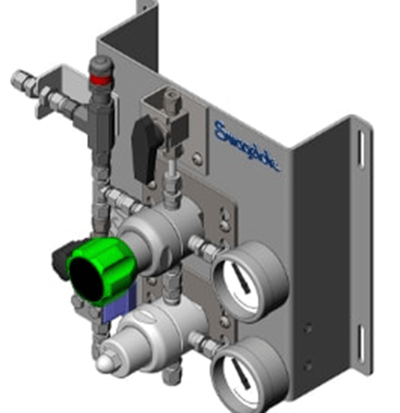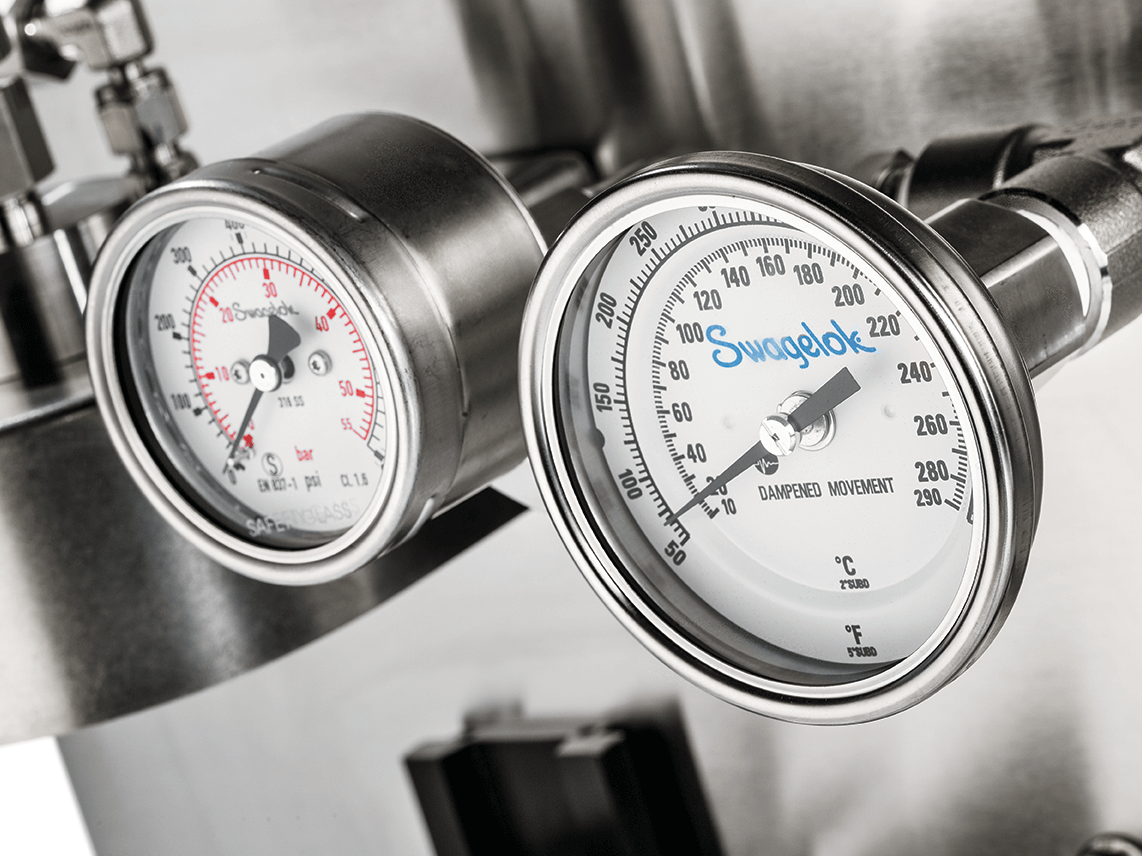In semiconductor manufacturing, gas delivery systems play an important role. Gas helps prevent contaminants from entering the manufacturing process and helps to maintain the integrity of the semiconductors during production. When choosing a gas delivery system for semiconductor manufacturing, industrial plants—specifically, those in Northern California—must ensure the system helps meet Cal/OSHA standards. Therefore, it’s also important that these plants understand the importance of quality of fabrication, reliability, and access to local vendor support for troubleshooting any potential challenges that may arise with their gas delivery system.
In this guide, we discuss the role of gas delivery and gas delivery systems in semiconductor manufacturing, the types of gas delivery systems to utilize, and the reasons to partner with a local vendor to meet gas delivery system needs.
The Role of Gas Delivery in Semiconductor Manufacturing
Gas delivery is crucial at multiple steps for semiconductor manufacturing. In each of these steps, it is critical that gas be delivered with the correct flow, pressure, and quantities to prevent hazards and loss.
Step 1: Deposition
In this step, gas reactants are used to create a thin film product that is atop a previous layer. As the movement of gas molecules and phases of matter is highly dependent upon temperature, temperature control is extremely important here. The proper delivery of gases at the correct concentration, pressure, and temperature are needed to control the gas reactants’ temperature.
Step 2: Photolithography
Photolithography utilizes a laser light source to imprint the design of minute circuitry onto the microchip film. It involves using tin vapor and a large amount of hydrogen gas. The tin vapor can be used as a light source for imprinting design and the hydrogen gas prevents the tin itself from depositing on the microchip (and thus preventing the microchip from being damaged by tin impurities). Control of large amounts of hydrogen gas with the proper gas delivery system is needed for this process to prevent damage to the microchip.
Step 3: Etching
Etching causes the pattern for minute circuitry to be permanently transferred to the microchip. Etching utilizes gases and reactants on the microchip. These gases are often highly toxic and the gas used is determined by the reactant on the microchip. Proper control of these gases using a gas delivery system is critical not only for the effective production of microchips but also for the safety of operators.
Step 4: Doping
Doping is used to modify semiconductor conductivity. It utilizes toxic gases such as arsine (ASH3), phosphine (PH3), and diborane (B2H2). Proper control of these gases is important. In addition, diborane is often mixed with hydrogen gas to slow down its rate of deuteriation. It’s important to have a high-quality delivery system for hydrogen gas.
Step 5: Annealing
Annealing modifies the thin film layers on the semiconductor. It involves utilizing oxygen or hydrogen gas to create a new layer in the semiconductor. The temperature, pressure, and flow of these gases are highly important as the reaction for the new layer needs to occur at high temperatures and pressures.
Step 6: Chamber Cleaning
At the conclusion of semiconductor production, the chambers need to be cleared of excess gas that was not cleared during fabrication. Utilizing cleaning gases—such as nitrogen trifluoride (NF3)—can purge any remaining reactants. A gas delivery system needs to deliver this gas to purge the system and keep the chambers in good working order.
For safe and efficient semiconductor manufacturing, it is important to have a properly implemented gas delivery system that meets all necessary requirements.
Gas Delivery System Requirements for Semiconductor Manufacturing
Efficient gas delivery systems need to limit waste, provide for effective monitoring of gas, and deliver gas at the correct flow, temperature, and pressure. If the gas delivered doesn’t meet the necessary flow rate, temperature, or pressure, it will not prevent leakage of gas, vent the system, or create the appropriate reaction. Further, gas delivery systems need to be composed of high-quality components that do not corrode when in contact with the gas and chemicals in use. By talking with a local expert, issues related to the implementation of a gas delivery system and maintenance of a gas delivery system can be determined.
| Gas Delivery System Issues |
Problematic outcomes |
| Low-quality hoses |
Risk of leaks and continual maintenance issues |
| Poor design and implementation |
Additional (unnecessary) connection points and additional risks of leaks; incorrect product usage |
| Poor temperature control of gas |
Needed reactions may not occur as the temperature does not reach threshold for reactions to occur; fractionation due to condensation of heavier molecules |
| Poor control of gas flow and pressure |
Potential leaks of toxic pollutant gases |
| Non-local vendor |
Significant time for supplies to arrive (potentially slowing production); non-local experts providing advice will not get a close look at the system or a deeper understanding of the plant manufacturing as a whole |
Troubleshooting a Gas Delivery System
The are several issues that could occur when installing and providing maintenance for a gas delivery system. Sometimes there is difficulty in connecting a source inlet to the correct cylinder connector. Other times, determining the inlet and delivery pressures can be difficult. Further, understanding what is needed for a specific system can get complex—such as determining if a one- or two-stage regulator should be installed. In essence, installing and troubleshooting a gas delivery system should never be taken with a “one-size-fits-all” approach. There are
Swagelok—a local gas delivery system vendor to Northern California semiconductor plants—has the experts to help take the uncertainty out of the implementation, troubleshooting, and maintenance. Swagelok Field Engineers Advisors can offer cost-effective and efficient solutions for gas delivery systems and related components (e.g. hoses, panels, and cylinders) with minimal connection points to limit future problems. Additionally, Swagelok offers highly configurable gas delivery systems which, with the help of an expert, can be customized to your plant’s unique specifications.
The Types of Gas Delivery Systems for Semiconductor Manufacturing
There are several gas delivery systems used in semiconductor manufacturing. These different types of gas delivery systems can work in tandem with each other to monitor and release gas at the proper temperature, pressure, and flow to produce semiconductors. Your needs should be taken into account when deciding on the specifications for each system.
Swagelok Source Inlet (SSI)

The source inlet connects the high-pressure gas source to the distribution system. For gas to be safely and effectively administered, the source inlet system needs to have well-fitted and high-quality hoses, valves, tubing, and filters. Swagelok offers highly customizable options for your source inlet system needs. These options include being able to purge gases when changing cylinders and the ability to vent individual lines to limit downtime.
Swagelok Gas Panel (SGP)
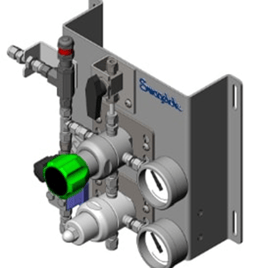
The gas panel is the primary gas pressure control. It reduces the pressure of the source gas to make gas flow to ideal specifications. There are several options for this gas panel to reduce pressure and control flow; these include one stage with a single pressure regulator or two stages with pressure regulators. Additional options include color-coding valves around the regulator to meet site specifications.
Swagelok Changeover (SCO)
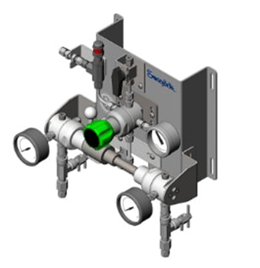
The automatic changeover system allows for gas sources to be switched without interpretation. This allows for a continual flow of the gas for manufacturing where halting gas flow is not an option or is extremely costly. Swagelok offers customizable options for the automatic changeover system to make sure that no gas is wasted and that the flow of gas remains constant. There are also options to set the changeover pressure to needed specifications.
Swagelok Point-of-Use (SPU)
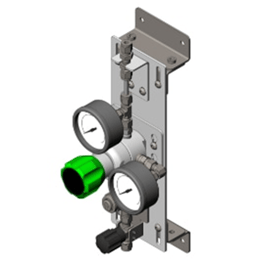
The point-of-use system provides the last stage of pressure control before the gas is used. They allow for an easy method to monitor and adjust gas flow and pressure. Swagelok has options for the mounting of the system (flat plate, bottom mount, top mount, and wall mount) and the direction of gas flow (top to bottom or bottom to top). Further, Swagelok’s design is compact and, as such, will likely not face space limitations when being incorporated. Finally, Swagelok has expert Field Engineers to help with components related to the functioning of this system such as the pressure regulator, gauge, and isolation valve.
Partner with Swagelok for Your Semiconductor Gas Delivery System Needs
A well-functioning high-quality gas delivery system is a crucial component of semiconductor manufacturing. There are several types of gas delivery systems. Integrating and maintaining a well-functioning high-quality gas delivery system with uninterpreted manufacturing can be a complex challenge. It is recommended to consult with a local expert on the type of gas delivery system that best fits current needs, how best to maintain current gas delivery systems, and how best to integrate new gas delivery systems. A local vendor like Swagelok can also provide the needed items and fixes faster than a distant vendor to prevent production delays. Further, experts at a local vendor can quickly provide a consult to determine the best path forward in terms of gas delivery system maintenance and repair.
Swagelok has the local experts and the supplies to provide Northern California semiconductor plants with their gas delivery system needs.
To find out more about how Swagelok Northern California can help you with your semiconductor gas delivery system needs, contact our team today by calling 510-933-6200.


